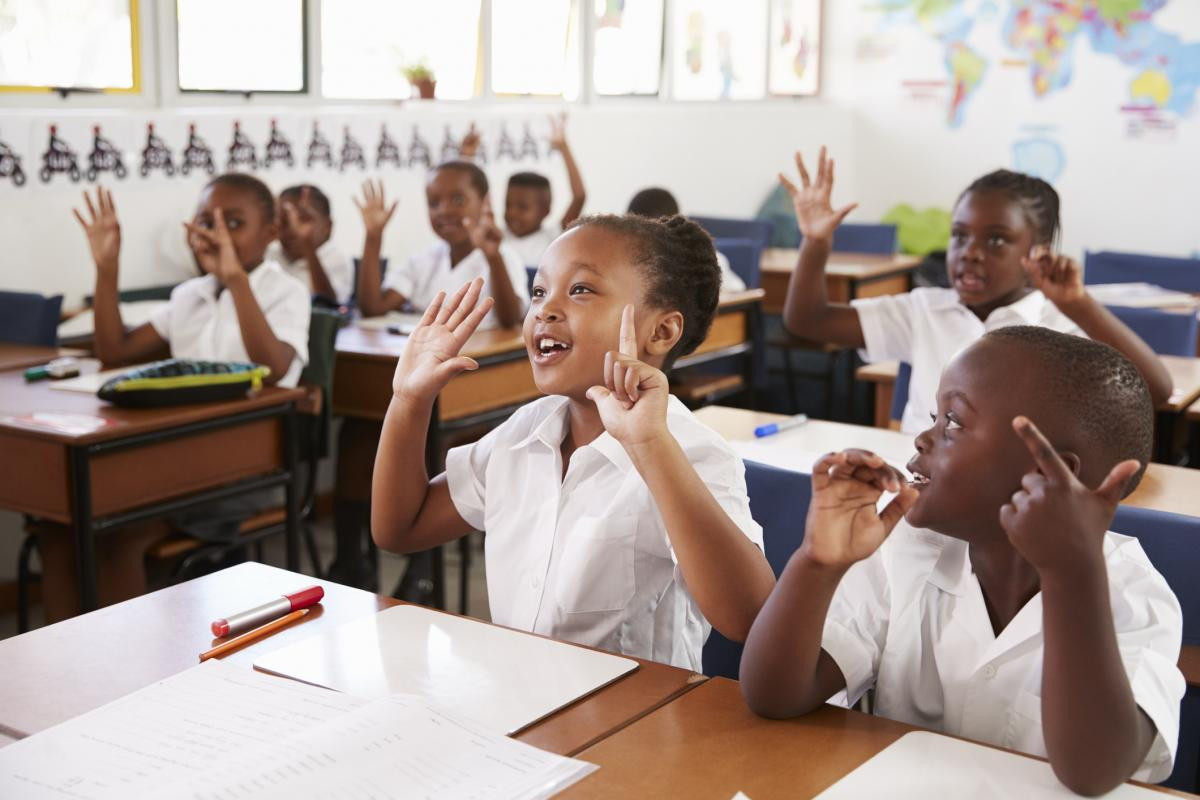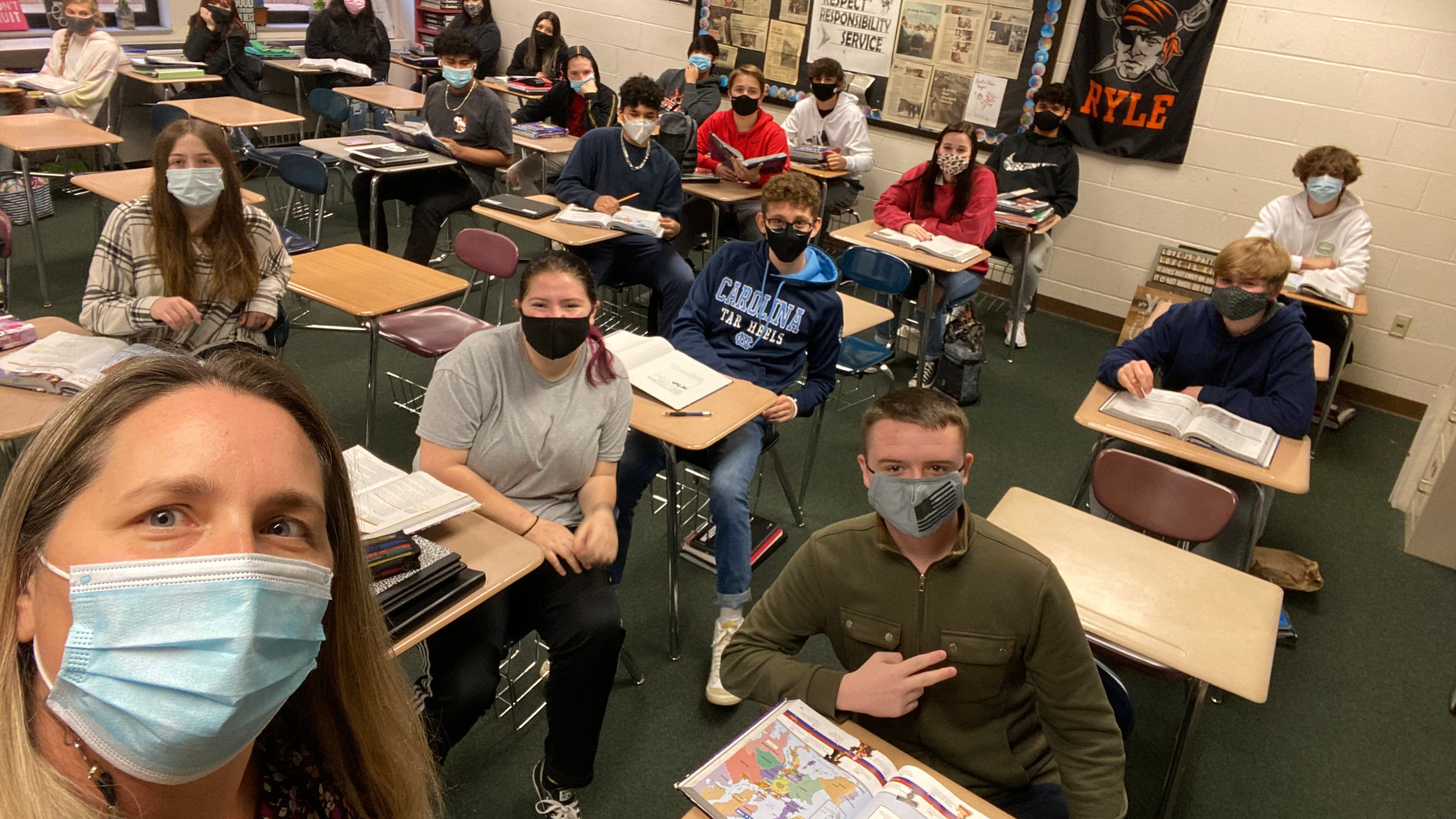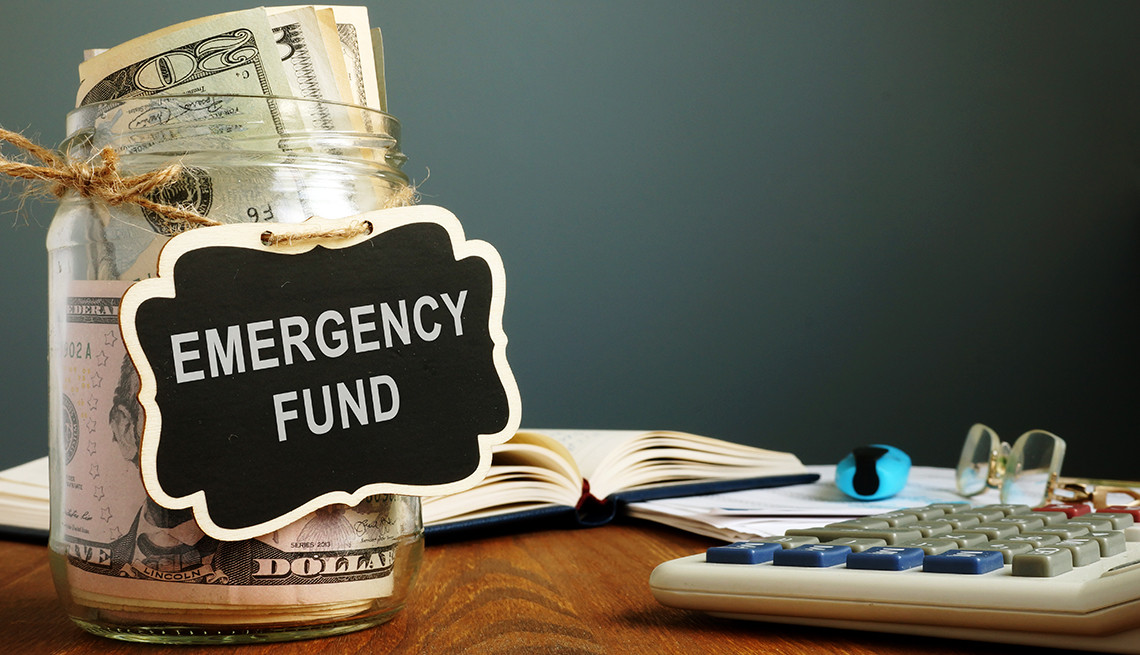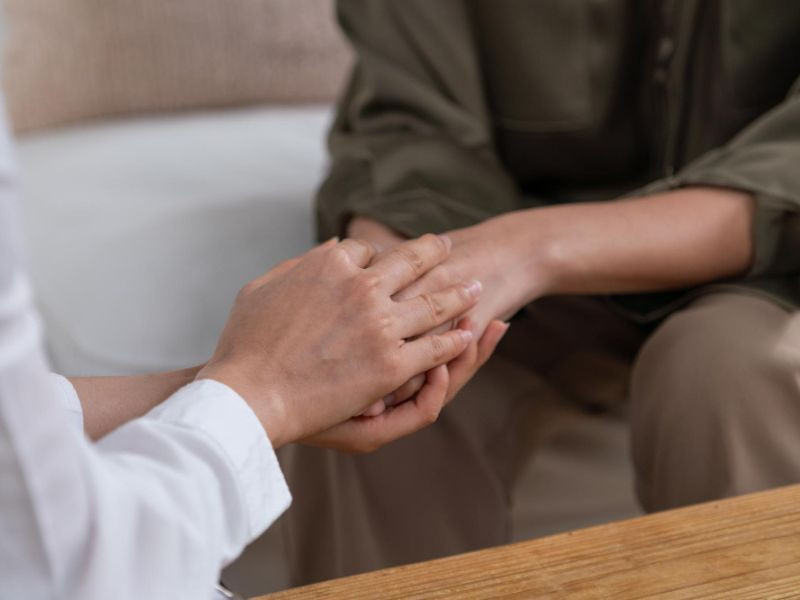As kids head back to school, health experts are urging families to take precautions against COVID, RSV and the flu. Doctors are warning of a rise in contagious viruses as children return to school this fall. The latest COVID variant caused a late summer spike and doctors aren't exactly sure why. "It took us by surprise the number of cases that we've had and now we're having schools come back in and various other things," said Dr. Andy Pekosz, a virologist and professor at the Johns Hopkins Bloomberg School of Public Health. And it's not just COVID, doctors say other viral diseases, like RSV or the flu, could soon pick up. "It's very difficult just based on symptoms to tell the difference between RSV, flu and COVID," Pekosz said. Doctors note that symptoms, like fatigue and fever, overlap, making it difficult to distinguish between the viruses without proper testing. They recommend contacting a healthcare provider for a diagnosis or buying your own tests. "It's always a good idea to maybe stock up on some tests so you can actually get a definitive idea of what your child is infected with if they come home with respiratory symptoms," Pekosz said. Experts also suggest using personal protective equipment, such as masks, and practicing social distancing to help prevent the spread and stress the importance of staying home when sick, regardless of the illness. "Those behavior changes do result in reduced spread of the virus and can be very helpful for people particularly in those high risk groups," Pekosz said. The FDA recently approved an updated version of the COVID vaccine for the latest variants, which will be available soon and can be taken along with the flu vaccine. The RSV vaccine is currently available for older and at-risk adults, as well as pregnant people. Also this month, the Biden administration plans to restart its free COVID test-by-mail program. Orders can be made at COVIDtests.gov.
COVID-19 Cases on the Rise as Schools Reopen
In North Carolina, COVID-19 cases are trending upward. At the same time, schools across the state have started — or are preparing to start — their new school years. In March, the Center for Disease Prevention and Control (CDC) released updated guidelines to prevent the spread of COVID-19 and other respiratory viruses. "Each year, respiratory viruses are responsible for millions of illnesses and thousands of hospitalizations and deaths in the United States," the CDC’s website says. "In addition to the virus that causes COVID-19, there are many other types of respiratory viruses, including flu and respiratory syncytial virus (RSV). The good news is there are actions you can take to help protect yourself and others from health risks caused by respiratory viruses." In May, the CDC also released updated guidelines on preventing the spread of COVID in schools, in alignment with the respiratory guidelines. "CDC has updated actions schools can take to prevent germs from spreading and keep kids healthy and learning," CDC Director Dr. Mandy Cohen said at the time. "This update puts lessons learned into actionable steps schools can follow to keep our kids, teachers, and school staff safe."
CDC Guidance for Schools and Individuals
Part of the CDC’s updated guidance includes recommendations for strategies to prevent respiratory illnesses: "We still must use the common sense solutions we know work to protect ourselves and others from serious illness from respiratory viruses — this includes vaccination, treatment, and staying home when we get sick," Cohen said. The new guidance does not offer specific guidelines on what to do if you are exposed to someone who tests positive for COVID-19 or another respiratory virus. However, the CDC lists the following prevention strategies on its website, in addition to the ones above: The CDC says to “stay home and away from others if you have respiratory virus symptoms.” This includes staying away from people you live with who are not sick. According to the updated guidance, you can go back to your normal activities when, for at least 24 hours, both are true: you have not had a fever (and are not using fever-reducing medication), and your symptoms are improving overall. However, the CDC says to “take added precaution” for the next five days, including wearing a well-fitting mask, physical distancing, and testing when you will be around other people indoors. Other additional preventative steps include finding cleaner air and practicing good hygiene. “This is especially important to protect people with factors that increase their risk of severe illness from respiratory viruses,” the CDC’s website says. “Keep in mind that you may still be able to spread the virus that made you sick, even if you are feeling better. You are likely to be less contagious at this time, depending on factors like how long you were sick or how sick you were.” If you develop a fever or you start to feel worse after you have gone back to normal activities, stay home and away from others again until, for at least 24 hours, both are true: your symptoms are improving overall, and you have not had a fever (and are not using fever-reducing medication). Then take added precaution for the next 5 days. If you never had symptoms, but tested positive for a respiratory virus, the CDC recommends taking the same steps of caution for five days. “For COVID-19, taking an antigen test can help you know how likely you are to spread the virus. A positive test tends to mean it is more likely that you can spread the virus to others,” the website says. You can read the full guidance on the CDC’s website and answers to frequently asked questions here.
Schools and COVID-19: A Balancing Act
This is the guidance the CDC published in May for schools regarding prevention and hygiene: The CDC also released the following tips for schools regarding infections: Core infection prevention strategies are important strategies for schools to use every day. For additional strategies, schools, with help from local health departments, should consider local context when selecting strategies to prioritize for implementation of additional infectious disease prevention strategies. Schools need to balance the risk of infectious disease spread with educational, social, and mental health outcomes when deciding which prevention strategies to put in place. Care can be taken so that decisions related to layered prevention strategies and learning options do not disproportionately affect any group of people or worsen health and education disparities. “Schools provide safe, supportive environments, routines, and important services that support student health and well-being,” the CDC’s website says. “Schools should have plans in place that can help reduce illness and illness-related absenteeism by preventing the spread of common infections. This guidance is designed to maximize school attendance and its benefits for all students, while also preventing the spread of infectious diseases.” You can read the full guidance for school’s on the CDC’s website, and a fact sheet for parents and guardians here.
Beyond the Classroom: The COVID-19 Pandemic's Lasting Impact
It might be hard to think about, but we’re still in a pandemic and experts are warning against COVID-19 complacency in schools, Andrew Wilkin writes. The 2024 school year is beginning amid one of the biggest COVID-19 waves of the pandemic. One U.S doctor states, “This is a very significant surge. The levels are very high. They’re the highest we’ve ever seen during a summer wave.” It might be hard to think about, but we’re still in a pandemic and experts are warning against COVID-19 complacency in schools. Dying with COVID-19 in the acute phase may have decreased, but complications from an infection exist — more than 2 million Canadians have “long COVID” (LC). In this context, societies that see themselves as equitable, inclusive and just need to consider if they’re doing the best job protecting their more vulnerable members, like children and many precarious workers. Research shows governments are not doing the best protecting the rights of children in a crisis, and reports from workers indicate some feel abandoned and left to deal with scary health situations, largely on their own. For school staff, students, their families and communities, this all seems quite cruel. It does not need to be this way. Organizations are working to make Ontario schools safer. Ontario school safety advocates for cleaner air in schools and research shows schools are safer when things like masking and vaccination are in place. However, these measures are generally not being followed. Dr. Pantea Javidan writes, “the lack of health and safety in schools resulting from zero-mitigation policies continues to cause great physical and psycho-social harms to children and families.” One study found 14 per cent of adolescents who have gotten COVID-19 developed some LC symptoms. Another study found 45 per cent of infected children with at least one persisting LC symptom. For workers with LC, about 14 per cent have not returned to work within three months since their infection. Many people have been knocked off career paths because of LC. It is a public health crisis for workers and youth. Allowing uncontrolled spread in communities and schools will likely see the crisis grow, so schools need to be made safe. Not making schools safe violates children’s rights because children’s rights to education include the right to an environment that is safe and not harmful to one’s health. Kids are major spreaders of COVID-19 and with certain policies, the schools they attend can be safer. HEPA filters should be in every classroom and always on. Businesses like the Apricot Tree Café in Mississauga are committed to clean air, use HEPA filters and are considered a leader in COVID-19 safe business practices. The owner reports not being sick in four years despite working in a high-risk industry. If a private restaurant can provide clean air, so can the public school system. Not doing so may violate certain human rights. Dr. Javidan argues “policies threatening the life, health, and education of children are cause for alarm among defenders of human rights.” Importantly, human rights overlap into workers’ rights. In the U.S., workers have been disabled at an unexpectedly high rate since the pandemic began, and researchers are wondering if there’s a COVID-19 connection. My research looks at precarious occasional teachers (OTs) in Ontario during COVID-19 and ways to make work safer for them, which makes schools safer for students. For example, hiring more secure contract teachers can reduce class sizes making them safer. Higher OT pay, basic income, and paid sick days could help by enabling sick people to stay home. OTs in B.C. make significantly more money per day than Ontario OTs, so higher wages are possible. Ontario OTs have no paid sick days and can be exposed to multiple schools and hundreds if not thousands of students and staff, which puts them and others at risk. Higher wages and/or a universal basic income allows OTs to have a buffer due to lost income from days absent. A policy of paid sick days can stop sick workers going to work and helps a robust economy. There are many educational and employment policy options available to reduce COVID-19 levels and protect students and workers during the 2024/25 school year. To uphold the rights of children and workers, these policies should be advocated for by community groups and unions, and adopted by governments and school boards.
The Importance of Staying Vigilant
As the curtain falls on summer vacation and thousands of Massachusetts students return to school this week, health officials are offering updated guidance on how best to keep kids from catching and spreading COVID and seasonal illnesses that often flourish in classrooms. Five-day isolation periods after testing positive for COVID are no longer required, including for children attending school. Instead, the Centers for Disease Control and Prevention suggests returning to normal activities when symptoms have improved overall for at least 24 hours, and if a fever was present, that it subsided without a fever-reducing medication. After a person has returned to normal routines, the CDC encourages them to take extra precautions for the following five days, like washing their hands more often and covering their mouth and nose when coughing and sneezing. In March, the CDC streamlined safety guidelines for COVID-19, flu, and other respiratory viruses. The change came as a result of the coronavirus no longer being the public health threat it once was. “We still must use the common sense solutions we know work to protect ourselves and others from serious illness from respiratory viruses — this includes vaccination, treatment, and staying home when we get sick,” said CDC Director Dr. Mandy Cohen in a statement at the time the update was made. The COVID guidance for schools and the general public are the same at this point, according to a spokesperson from the Massachusetts Department of Public Health. If children exhibit respiratory illness symptoms, they should be tested for COVID-19 and flu. If they test positive, health officials recommend they stay at home to reduce the risk of infecting others. Hand-washing often with soap and warm water or using hand sanitizer containing at least 60 percent alcohol also aids in limiting the spread. The same recommendations apply to a child — or any person — who is asymptomatic but tests positive. And although it’s not required, staying home for about 72 hours may also help prevent getting others sick. Boston Public Schools said it is working with the Boston Public Health Commission to revise existing COVID protocols but did not have any updates at the time of publication. “We are following CDC guidelines and we will be putting out something new in the coming days,” said Max Baker, a BPS spokesperson. Cambridge Public Schools said it is lifting most testing requirements, which were required in past school years. The district will no longer send students and staff at-home test kits to use before school starts, nor when they feel COVID-like symptoms throughout the year. Likewise, students will no longer receive tests to use the morning before returning to school after Thanksgiving, winter, February, and April breaks. Nurses in CPS will continue to test students who report COVID symptoms. Masking continues to be optional and students aren’t required to be fully vaccinated. “Our communal efforts to mitigate the spread of infection have allowed Cambridge Public Schools to suspend at-home targeted post-break testing,” said David Murphy, CPS interim superintendent, in a statement. The decision was made in partnership with the Cambridge Health Alliance. “We continue emphasizing prevention strategies such as hand-washing and are poised to adapt quickly if conditions change,” Murphy said. “Finally we will continue to send periodic communications in order for our community to stay vigilant against the continued spread of the virus.” In Chelsea, there are no new rules since last year. “Nothing’s really changed on that front,” said Chelsea Public Schools spokesperson Michael Sullivan. “We’re following current protocols. Nothing’s different from the past school year.” It’s better for your child, their teachers, and their peers to stay home if they are feeling sick, and they should feel supported to do so even if experiencing some anxiety over missing lessons or important schoolwork, said Jennifer Fiore, a primary care pediatrician at Boston Medical Center. “Health is always the number one priority,” she said in an email. “Good communication with teachers is key to ensure they are able to recover fully and catch up with school work.” Fiore also said vaccinations are key to best health practices. And as important as infection prevention is, it’s “normal and expected” for young kids to get sick at times. “I often counsel families that children attending day care for the first time can contract up to 10 illnesses throughout the year,” Fiore said. “This is part of the normal process of building up a healthy immune system.” The Boston Public Health Commission plans to resume distribution of COVID test kits and personal protective equipment in October, said spokesperson Andrew Lemos in an email. Additional details will be available in the coming weeks, he said. In Cambridge, free at-home COVID-19 tests are available at the Cambridge Public Health Department, located at 119 Windsor St. Staff writer Christopher Huffaker contributed to this report. Natalie La Roche Pietri can be reached at [email protected]. Follow her @natalaroche.


















